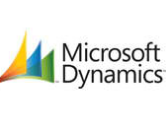More cross-platform and cloud support ahead for Microsoft Dynamics ERP, CRM

The Microsoft Dyanmics CRM/ERP teams are finishing out 2012 with a handful of new releases. They're also readying more cross-platform and Windows Azure support in the new year.

The Dynamics AX team just made generally available (this past weekend) the Dynamics AX 2012 R2 release -- the follow-on to the Dynamics AX 2012 product the team shipped a little over a year ago. Next up from the team will be a feature pack (delivered in another year-plus), and then the next full Dynamics AX release, which will be out in 2014, said Christian Pedersen, General Manager, Dynamics Enterprise Applications and Services at Microsoft.
By mid-December, the promised Q4 service update for Dynamics CRM (on-premises and online both) is slated to be generally available. This update will include more cross-browser support, but not the cross-platform support originally expected in this update.
To round out the month, on December 19, the Dynamics GP team will be making generally available the Dynamics GP 2013 release. Dynamics GP is one of Microsoft's four different ERP platforms; the other three are the aforementioned Dynamics AX, as well as Dynamics NAV and Dynamics SL. Microsoft execs had been hoping to get Dynamics NAV 2013 and Dynamics GP 2013 hosted on Windows Azure this year, but neither was ready. It's now looking like NAV 2012 and GP 2013 will be hosted on Azure by mid-calendar 2013, said Errol Schoenfish, Director of Product Management. The Azure-hosted options will be sold via partners, not directly by Microsoft.
The Dynamics AX 2012 R2 update enables multiple languages and legislations to be run from within a single instance, among other new features. The coming GP 2013 update adds improvemens to hostability, manageability and deeper Office/Office 365 integration -- and a total of 125 different enhancements, said Microsoft officials. The CRM fall service update adds support for more browsers; embedded Bing maps and support for Office 2013, among other new features.
Like many other teams at Microsoft, the Dynamics CRM and ERP teams have stepped up the delivery pace of new updates and releases. The CRM team already is delivering two major CRM Online and on-premises updates every year. The NAV team is moving toward a yearly update cycle. The Dynamics GP team is evaluating whether customers in that space are interested in updates delivered any more frequently than the current every two-year pace, said Schoenfish. For customers running GP on premises, more frequent updates might prove harder to digest than not, he said.
Microsoft officials said earlier this fall that a Windows 8 version of its Dynamics CRM application would be available in the Windows Store by mid-2013. On the ERP side of the house, the teams are evaluating what kind of Windows 8 companion apps would make sense. Rather than attempting to make the ERP back end available as a Windows 8 app, the Dynamics GP and AX teams are looking to provide Windows 8 apps that would provide a subset of capabilities, such as an app for querying and viewing information about their ERP implentations. So far, there's no public timetable for these applications, however.
At the same time, Windows isn't the Dynamics teams' only focus. The CRM team went back to the drawing board to redo promised iPad/iOS version of Dynamics CRM and make it a JavaScript/HTML app. It sounds as if the ERP team is thinking along the same lines.
"HTML5 client experiences should give users on other platforms more access to the ERP back end," said Pedersen. He said the ERP teams had nothing yet to announce on the cross-platform front, however.
Schoenfish and Pedersen both emphasized during a phone interview I had with them earlier this week that the Dynamics team is collaborating more closely with other teams outside of their Microsoft Business Division unit than ever before. The Dynamics AX team, for example, has done work with the SQL Server team to enable Power View and PowerPivot to integrate directly with customers' ERP implemention. The team also has worked hand-in-hand with the SharePoint team resulting in the ability of ERP customers to use either SharePoint Server or SharePoint Online as their repositories.
As we've heard, cross-business-unit collaboration is a priority for Microsoft in 2013 and beyond, so stay tuned for more here.